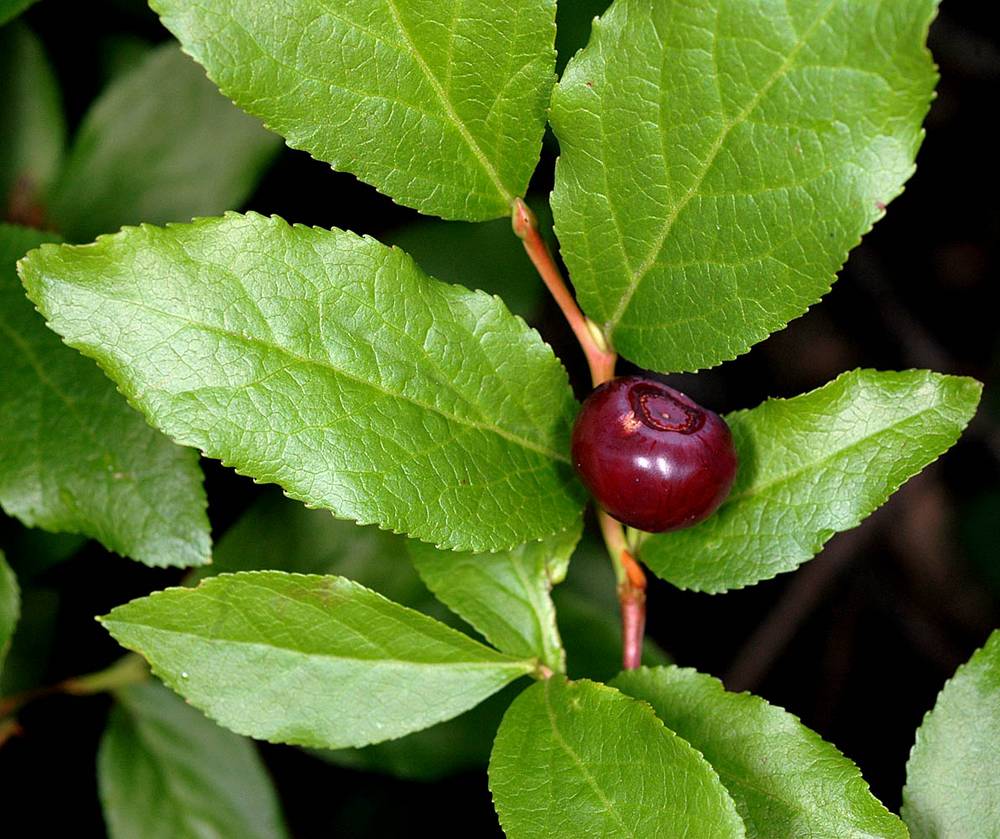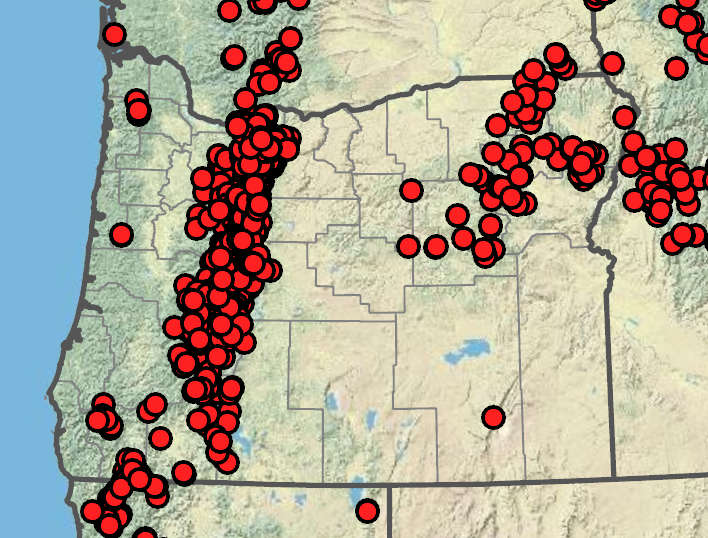Vaccinium hirsutum
Vaccinium membranaceum
black huckleberry, thin-leaved huckleberry
elliptic to ovate, 30–50 × 10–25 mm, light green abaxially, turning red to purple with age; thin; flexible;
margins sharply serrate from tips to near base;
tips acute;
surfaces abaxially glandular, adaxially glabrous.
sepals 5;
calyces shallowly lobed;
petals 5;
corollas shallowly lobed, globose to urceolate, 3–6 × 5–7 mm, white to pink, glaucous;
filaments glabrous.
6–12 mm in diameter, dark red to black; without a bloom.
=48.
Vaccinium hirsutum
Vaccinium membranaceum
Mid- to higher elevation coniferous forests (rarely at lower elevations). Flowering Apr–Aug. 1000–2100 m. BW, Casc, CR, Lava, Sisk. CA, ID, WA; north to British Columbia, east to Quebec, southeast to AZ. Native.
Renowned for the flavor of its berries, V. membranaceum is one of the most extensively harvested Vaccinium species in the wild. This species bears the state fruit of Idaho.
Stephen Meyers
- Local floras:
BC,
CA,
OR,
WA
- Local Web sites:
CalFlora,
CalPhotos,
Flora NW,
PNW Herbaria,
Turner Photog.
WildflowerSearch
iNaturalist (observations)
USDA Plants Database
- LBJ Wildflower Center
- SEINet
- Plants of the World Online
- Encyclopedia of Life
- Wikipedia
- Google Image Search



